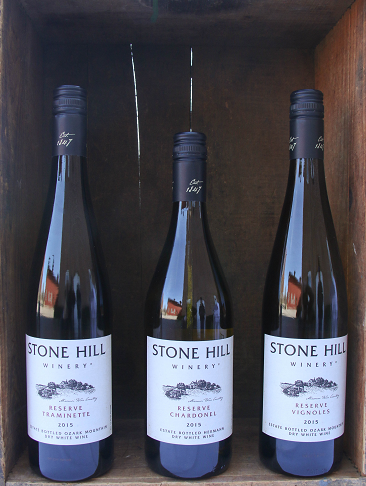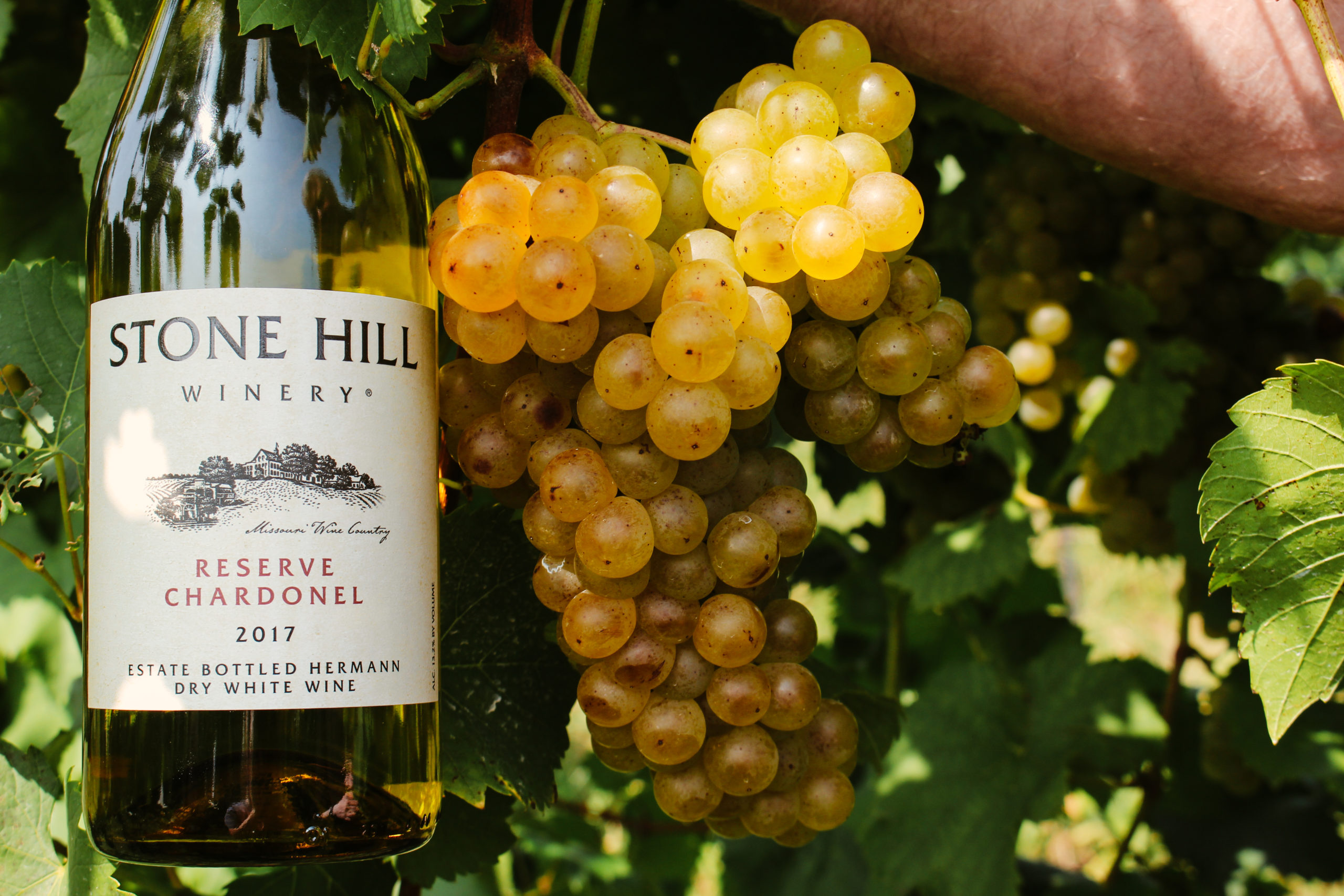
Stone Hill Winery produces three reserve wines: Chardonel, Vignoles, and Traminette. If you’ve ever wondered what the word “reserve” on a wine label means, the answer is not always a clear one. The term originated from the idea that winemakers held back or “reserved” some of their best wine. Today, “reserve” generally refers to a wine that has been aged longer. The differences between a wine and its reserve are mainly stylistic. This holds true for Stone Hill Winery’s reserves, which are developed into wines with more “mouth feel” and bigger, drier, more complex flavors resulting from a longer aging process.
Stone Hill Winery’s three reserve wines are all bottled in smaller quantities than the regular version of their wines. The grapes used in the reserve wines are selected with great care— with the best rows in the vineyards set aside for them. After the grapes are picked and de-stemmed, they are crushed and pressed. The juice that drains freely from the press is known as “free run juice.” This juice is very high quality and is an important component in making the reserve wines.
Aside from differences in grape and juice quality, reserve wines often receive different treatment in terms of barrels, yeast and aging techniques. For the regular Chardonel, it is aged in American and European oak barrels that are about 225 liters, while the reserve solely uses a French oak barrel that is almost double in size. This larger barrel allows for a wider surface area for the lees yeast (deceased yeast cells) to be in contact with the wine. This process is called sur lie aging. The yeast goes through a process called autolysis where the yeast starts breaking down, releasing and enriching the wine with more complex compounds such as mannoproteins, amino acids, and fatty acids. The result is a wine with more structure, creaminess and a rounder mouthfeel with an oak presence from maturing in the French Oak barriques. An extra benefit of the lees is its reductive nature. The lees absorb oxygen, and thereby also provide some protection against oxidation. When oxidation takes place the wine’s pigmentation will decrease and a loss of aromas and flavors occur.
All our reserve wines undergo a process called “batonnage” which is a French term meaning the stirring of the lees. This process helps to suspend the lees into the wine, helping to release and blend in that complexity from the sur lie aging. With the Reserve Chardonel we use a golf-putter like tool placed into the barrel scraping the bottom of the barrel with the flat part of the tool. Our tanks of Vignoles and Traminette simply get stirred with a mixer. The batonnage is done weekly throughout the 8-12 months of sur lie aging.
As for Traminette, with the regular wine we arrest the fermentation to leave natural sweetness. We also use a yeast that promotes the formation of aroma and flavor compounds reminiscent of lemon and lime. The reserve however, is fermented to dryness using a yeast to produce more Alsasian wine like aromas, flavors and mouthfeel. It is then left sur lie for 8 months, resulting in a more full-bodied dry white which showcases more floral and perfume characteristics.

Vignoles — or “sunshine in a grape,” as head winemaker Shaun Turnbull says—is a crowd favorite, with a lot of natural sugar and makes a tropical Riesling-like white wine. For the reserve, the grapes must be picked earlier at lower brix to ensure less sugar. This prevents the wine from ending up with too high an alcohol-by-volume, due to the fact that the fermentation is allowed to ferment out all the grape sugars. This results in the Reserve to be dry with crisp acidity to help lengthen the finish of the wine. This past year for the Reserve Vignoles, an oak stage was added to increase the complexity of the wine. Turnbull promises that this year’s Reserve Vignoles will be fresher and have even more aromatics and flavors.

Stone Hill produces about 100 cases of each reserve wine a year. Reserve wines are bottled in August, several months later than their counterparts of the regular versions which are done in March. Stone Hill Winery’s owner, Jon Held, loves the Reserve Chardonel (“Best Wine Ever”) and thinks it is a great value. All the Stone Hill Winery’s reserves are worth the extra effort needed to achieve these special versions. It is fun to taste the Reserves next to their regular versions, so make sure to try them next time you visit.